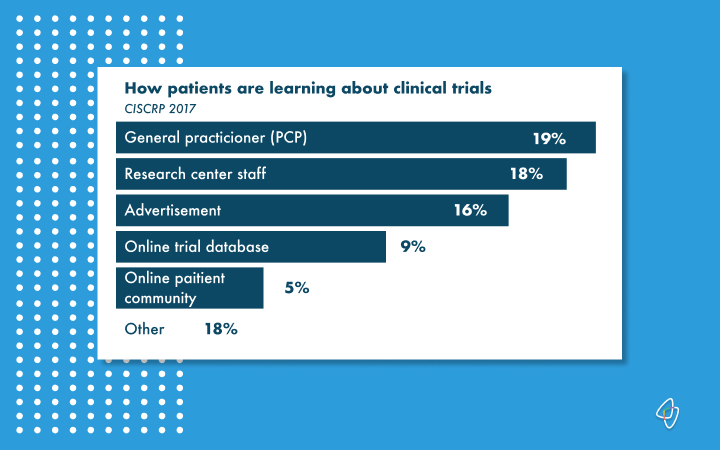Accelerating Clinical Trials with Patient Centricity: An Introduction

THE WHAT:
PATIENT CENTRICITY
In a world where consumers can instantly book a taxi, housekeeper, or their next vacation from their mobile device, the clinical trial enrollment process remains jarringly behind the curve. The user experience in finding the right trial should meet the expectations of today’s patients. In order to recruit the most engaged, relevant patient candidates, clinical trial sponsors and sites can uncover valuable lessons in how to leverage modern technology to better recruit and retain study participants.
At Clara we believe that patient centricity is the north star of clinical research development. Without the patient perspective, trials are likely to overspend, miss deadlines, or ultimately fail to enroll a sufficient number of participants and end prematurely. In the following, we will detail how to optimize clinical trial design, recruitment campaigns, and retention processes in order to empower patients to seek out, enroll, and thrive in a clinical trial.
We wrote about the major areas in which patient-centric practices can make a huge difference for a clinical trial. They are:
Protocol-design
Recruitment
Screening process
Retention
Tracking Metrics
Building your own Solution
THE WHY:
A NEED FOR A NEW APPROACH
Delays in patient recruitment and retention are one of the main barriers between breakthrough research and patients. More than 85% of clinical trials fail to complete enrollment within their forecasted timeframe, and 15-40% dropout rates are not uncommon. Each day a blockbuster drug is delayed can cost sponsors millions in sales as a result. There is a clear need for optimizations here.
After all, only 11% of clinical trials are leveraging social media for trial recruitment, while the rest only utilize traditional advertising channels, i.e. radio, print media, billboards, or TV. While these channels work well for brand awareness and for recruiting patients with highly common conditions. However, the channels don’t allow for targeting of specific patient populations, such as rare disease groups or for patients undergoing a specific and qualifying treatment protocol. Instead traditional advertising becomes a loudspeaker wherein most of the cost reaches irrelevant traffic.
Between 2001 and 2014, 21% fewer patients enrolled in trials despite a 3-fold increase in clinical trials registered at Clinicaltrials.gov. The digital age has created a fundamental paradigm shift in trial recruitment. Over 43% of people now use the internet as their go-to source for health and wellness information. In comparison to traditional media, digital patient recruitment often creates an outsized outcome, flooding the system with responses. Yet, still, many organizations fail to tailor their digital recruitment to the needs of the individual patient journey.

As medical information is increasingly accessible online, the CISCRP finds that patients today are more likely to learn about clinical trials from “Doctor Google.” Patients are reaching out to sites of their own volition, without needing to wait for the traditional guidance of a medical professional.
The traditional enrollment process hasn’t adapted to this change. Patients face numerous barriers, and in the end, many qualified candidates drop-off before enrolling in a trial simply out of frustration.
The consideration of the patient journey in trial recruitment can make a sizeable impact on whether or not a patient enrolls in a trial. Conversely, designing and running your clinical trial enrollment process without empathy or insight into the patient journey will cause your recruitment funnel to spring unnecessary leaks. The patient perspective can also be used to build recruitment campaigns that speak to caregivers or family members in order to inform and motivate them in the most authentic and personalized manner possible.
Since founding Clara Health in 2015, we’ve been working with patients, trial sites, and sponsors to create an easier way for patients to find and enroll in clinical trials. From founding and cultivating a network of patient advocates to creating podcasts and educational guides, we’ve worked with thousands of patients to learn from their perspective what makes a trial engaging. We’ve also seen what can cause a patient to drop out.
Based on the invaluable feedback from our patient advisors, our refined recruitment workflow, and years of successful retention data, we’ve compiled our insights on accelerating the clinical trial recruitment process. These insights, when put to use, save valuable dollars lost to traditional approaches, and provide exceptional patient experiences.
To read about how patient-centricity begins with protocol design, Read Ahead.
